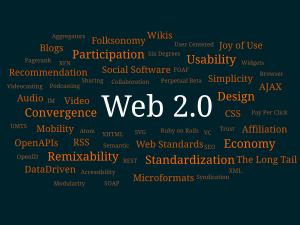 Image via Wikipedia
Image via Wikipedia
I was then posed the question of why do those school districts not allow these tools to be used. I started with my usual "don't understand how to use them, afraid to use them, don't see the value in them and can't monitor them..." I was stopped very quickly at my last point. He said, "what if you could monitor them?" Monitor what my students / faculty are doing on their web 2.0 tools, such as Facebook or Twitter?
Most school districts today utilize an appliance that filters strictly based on URL or categories. You can block the main categories such as porn, gambling, etc. You also have the ability to block certain URLs and unblock those that slip through the cracks. While the vendors in this field do a fairly decent job of keeping the lists up to date, we all know we can't block everything. I digress...
What if school districts had a tool that gave them the ability to open up Web 2.0 / Social Networking applications such as Facebook, Twitter, You Tube, etc. to ALL users, but still maintained the control necessary to ensure they are being used either for educational purposes or for non-threatening / inappropriate uses? Wow. What a power tool that would become. I can't imagine a school district that wouldn't embrace the use of the tools that students use on a daily basis (unfortunately mostly OUTSIDE of school) and harness them to enhance student learning and communication. To have a tool that would let administrators set keyword or phrases that are inappropriate and when entered into a Facebook status update or a Tweet cause the user's browser to either timeout or be redirected to a page that lets them know of their inappropriate actions. Again...wow.
Since most filtering that is done today in K-12 is not content based, we haven't had these types of discussions. What a different approach to filtering and shifting the mindset of how we utilize Web 2.0 / Social Networking schools in K-12. Let's be honest, for those of us who believe in the value of these tools and wish we could turn them on for all users, we simply can't because of the lack of monitoring / control that we have. But, if you have an application in place that can take away that fear and provide a safe and secure environment for using these tools as a part of learning...think of the possibilities.
JDS | CIO




No comments:
Post a Comment